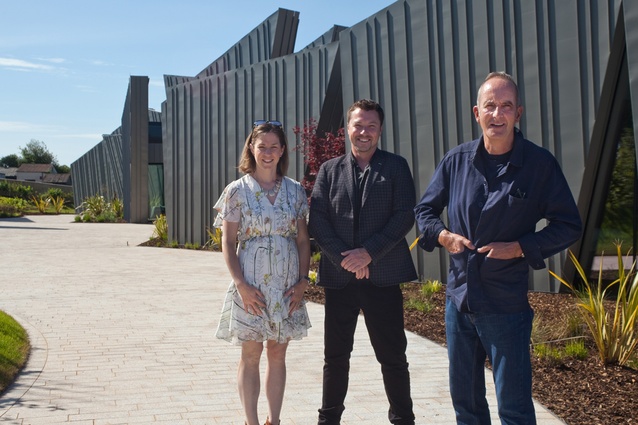Grand design down under
‘Grand’ reveals a certain distance from its content, confirming design as an elite activity and, while it is thought to be generally about ‘architecture’, the word doesn’t appear in the series title, although used regularly during the show.
It apparently began 24 years ago in England, fronted by Kevin McCloud, who is a performer, not an architect, and the show is now seen in “60 or 70 countries”, making it an international franchise. It includes some regular routines, such as the presenter praising the building and then indicating his superiority with a big ‘but’, followed by a ‘wondering’ about potential shortcomings, such as feasibility, timing or budget.
So, what is it about? It’s about the construction of upper-end houses and it makes one wonder whether it is watched enviously, or critically, by viewers. What it does demonstrate is that, even when there are lots of resources, there are numerous hassles involved in building a house. Every show turns out to be about the problems that come up during construction, although the solutions are seldom spelt out. It does seem as though the difficulties might be exaggerated at times but it emphasises the commitment required.
A surprising aspect is that, prior to the final visit of the presenter, completion looks remote but, at the visit, there it is, with finishes, furnishings and landscaping (or at least what is filmed) and then the completion party. We all know that this is somehow false but perhaps what is true is that, at the end, all is forgotten. Houses take forever to finish and this is a complex and detailed issue.
Although the word ‘architecture’ is used regularly during the show, architectural concerns do not appear and architects seldom figure as important, at least since Chris Moller (a member of a significant Kiwi architectural clan) left the local show. Certainly, we architects imagine we’re important but, while the programme hooks into the intensity and complexity of building a bespoke house, it somehow leaves out the architectural process.
Discussions and disagreements between owners and architects are not shown, nor the production of the usual proposals, propositions and problems. Sketches, briefs and diagrams don’t appear and the clarity and complexity of cross-sections (the basis of design decisions for many architects) are not used.
Architectural drawings are not shown; rather, a crude, digital 3D line drawing is presented, giving locations of functional spaces. So, all the work that an architect does conceptually, programmatically and graphically does not appear. The joy of architecture — the visual and spatial — seldom has a look in. Instead, the house is a means of displaying the whims and taste of the owner. Finally, the results are often unusually dull compared to the interesting local houses that do (or don’t) win local accolades, by hardworking architects all over the motu.
Recently, the short list was presented for the RIBA ‘House of the Year’ under the Grand Designs banner. Revealed was a tendency to cover all options in the commentary, such as “the balance is exactly right”, or “protecting the past while guaranteeing the future”, “simple but generous”, “intimate but grand”, none telling us much, with an overindulgence in “beautiful” and “wonderful”. The winner, which was fairly ordinary, was chosen by the RIBA judges who said it was characterised by “playfulness”. Those used to Athfield and Walker might wonder in what way.
- Mike Austin
I wasn’t sure what to expect of Kevin McCloud’s one-man show, Home Truths. He’s been dubbed the ‘David Attenborough of architecture’ and there’s no denying his success in bringing the subject to a wider audience through his enduring television series. His great strength is in his ability to interact with the home-owners, making it about them and not him… or at least until his asides are edited in.
On the night, he certainly entertained — effusive, endearing and engaging in equal measure — telling us that the show’s greatest legacy, perhaps, was its bingo game, where there are extra points for when the windows are late or when someone gets pregnant… “I’m never anything to do with that, of course.”
His stand-up routine moves from Slido questions for the audience to favourite home-owners he has met to solutions to help combat climate change: “Around the planet, currently, cooling accounts for about 10 per cent of our electricity usage and it’s set to triple by 2050, which is sort of taking us in the wrong direction for our carbon targets.”
He offers a number of building solutions that could help, such as Pakistani windcatchers, Iranian water towers and the traditional Arabic mashrabiya. Mario Cucinella would approve. Maybe the most appropriate option, however, at least for this audience, is to plant more trees: “If you do nothing else as a community, plant some trees in your street because all the research suggests that streets with trees in them in our towns and cities are between eight and 12 degrees cooler”.
Everyone appears well amused and interested throughout the evening and, perhaps not surprisingly, my Slido question as to why architects don’t feature more prominently in Grand Designs doesn’t make the cut.
- Amanda Harkness










